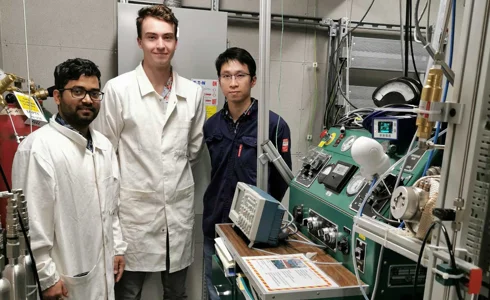
Kacper Kaczmarczyk
Theme
Chemical Energy ConvertersProject
Advancement of Combustion and Computational Modelling in Hydrogen Spark Ignited Internal Combustion EnginesSupervisor(s)
Prof Sam Akehurst, Prof Chris Brace, Dr Hao YuanBio
Kacper graduated from University of Wales Trinity St. David in 2019 with a first-class BEng (Hons) in Motorcycle Engineering, focusing on powertrain development. Kacper’s final year thesis expanded upon the understanding of internal combustion engines (ICE); specifically, calculating real polytropic index during combustion, in addition to adopting and modelling turbulent jet ignition technology from Formula 1 into a passenger car engine. His passion for ICEs was realized by a race engine development company, Race Techniques Ltd. where Kacper carried out modelling & optimization of high-performance Porsche engine. Subsequently, Kacper also led a team for modelling and optimizing Ford Zetec hill climb racing engine, for which he designed a bolt on passive turbulent jet ignited system, based on his thesis work. Kacper is also motorcycle enthusiast, which drove him to become data analyst of Kawasaki sub-team of Orthus Racing for one racing season. Kacper is interested in advancing ICE sustainability and performance via computer modelling and looks forward to working within AAPS to edge closer to his ambition of a carbon neutral, efficient and exciting propulsion future.
Fun Facts
- I'm a very passionate motorcyclist and I own a very fast sport bike
- I was an apprentice at a successful race engine development firm while I studied at Sixth-Form
- I built my own computer when I was 14
- I've repaired and maintained my motorcycles myself since I was 16, so I haven't actually went to a mechanic once
Advancement of Combustion and Computational Modelling in Hydrogen Spark Ignited Internal Combustion Engines
Kacper’s PhD is intended to advance the field of computational hydrogen combustion modelling in internal combustion engines (ICE), of which the main focus is the modelling of combustion in predictive scenario, in order to accelerate the development of sustainable (people, profit, planet) powertrains by brining new tools and expertise to the industry.
Most countries around the world have promised to act against the increasingly worrying issue of global warming. This has primarily manifested itself in stringent legislation to reduce carbon emissions.
Naturally, as transport accounts for a very considerable fraction of the global emissions, it has been set very ambitious goals. The main concern in this sector is the global calling for zero-emission vehicles (ZEVs) to be exclusively sold from years ~2035 and ~2050, for light-duty and heavy-duty vehicles respectively. This trend is expected to only continue as international pressures increase.
Currently, there are two powertrain solutions that are generally considered to be the answer to the set challenge of ‘ZEV’: Battery Electric and Hydrogen (H2) Fuel Cell Hybrid.
However, both of those powertrains raise challenging concerns that question the feasibility of their mass-scale adoption. The main Battery Electric concerns are long charging times, range anxiety, cost, high Carbon footprint from the manufacture, lack of infrastructure, un-proved long-term reliability and challenging after-life. There are also some indirect concerns, such as precious metal depletion, exploitation of poor mining communities, the toxicity caused by said mining etc. H2 Fuel Cell Hybrid mostly solves the charging time and range anxiety of the Battery Electric powertrain; however, it also inherits many of the other concerns. Even though current research focuses on mitigating these issues, it is very much possible that implementable solutions to these problems will not be developed within the set timeframe.
The utilisation of current internal combustion engine (ICE) based powertrain systems with zero-carbon energy carrier, that is green H2, has the potential to deliver a widely adaptable (by industry and customers) ‘ZEV’ within the set timeframe. This is primarily because H2-ICE is an evolution, rather than a revolution as is the case in the aforementioned powertrains. The comparable disadvantages of H2-ICE are lower tank-to-wheel efficiency of ~30% compared to fuel cell’s 35%, and nitrous oxide (NOx) emission which would have to be mitigated in order to comply with the ‘ZEV’ standards. However, one of the most notable advantages is comparably little to no increase in powertrain cost compared to traditional powertrains, already existing manufacturing infrastructure, similar range to H2 Fuel Cell with none of its drawbacks, and already achieved global warming potential (GWP) parity with fuel cells as well as the possibility of lower GWP than even the Battery Electric in the future.
Naturally, much more additional research must be carried out in order to make the H2-ICE a realistic option for original equipment manufacturers (OEMs), as although H2 ICEs have been 'in development for more than a century, it is only recently that it has gained serious interest by researchers and the industry.
